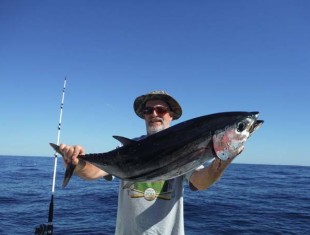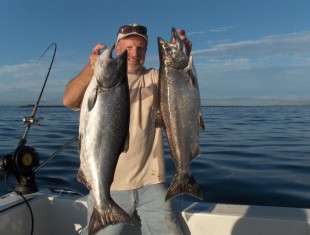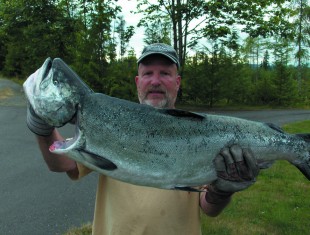EARL SANDE
I started salmon fishing at Westport during the summer of 1973. Harbor porpoises were a common sight in the ocean then as they are now.
There were still lots of them in Puget Sound in the 1940s, but their population seemed to decline every year and by the 1980s they were rarely seen.
There are many reasons for their decline in inland waters ‑ industrial pollution, storm water pollution, increased boating traffic and the crash in bait fish numbers to name a few.
But probably the single biggest reason was the Boldt Decision of 1974. After the decision the tribes were legally entitled to 50 percent of the harvestable salmon (which sometimes meant catch as many as you can). And all gill netting was done with heavier material that porpoises could sense and could avoid.
After 1974, monofilament was legalized for gill nets, which has a tiny diameter and can be an invisible wall of death.
With many runs of wild Chinook and Coho nearly exterminated there are a lot less gill nets in Puget Sound these days and the harbor porpoises are making a comeback in our inland waters.
Of course, this is just my opinion and not everyone thinks like me.
The harbor porpoise is one of the smallest species of whales and lives in many areas of the northern hemisphere, primarily over the continental shelves in water less then 500 feet deep.
They prefer a water temperature less then 62 degrees and need to eat a lot of small fish to stay warm. Various baitfish and squid make up most of their diet, which often is less then three miles from shore.
They will occasionally swim up rivers looking for food. One was recently seen 40 miles up the Fraser River.
During parts of the winter off the Washington Coast some have been spotted 25 miles from shore. There must be lots of good things to eat out there during that time of year.
Harbor porpoises don’t live as long as other whales; 20 years seem to be their limit.
Most of them become sexually mature at three to four years of age. The mating season happens only once a year only for a few weeks in early summer, and 11 months later out pops a single calf the mother will nurse for at least eight months. Females will usually have a calf every year but sometimes will skip a year.
Great white sharks and killer whales have been known to kill and eat harbor porpoises, and some species of dolphins seem to have a grudge against them and sometimes kill one for no apparent reason.
They can range from four to six feet long and weigh 110 to 150 pounds with females being heavier then males. They usually travel and feed in groups of two to five unless there is a huge school of baitfish, then there could be many in one area.
Harbor porpoises rarely jump out of the water like killer whales and dolphins. Usually all you can see is the front part of their dark back and the small dorsal fin rolling about a foot out of the water when they come up for a breath.
They have some dull white on their bottom side but you usually can’t see that because it only takes them about three seconds to grab a breath of air.
Harbor porpoises dives as deep as 750 feet have been recorded, lasting over five minutes, but that’s not something they do very often.
In Europe, harbor porpoises have been hunted for food and fuel for thousands of years. They still are in Greenland and Japan.
Like all top marine predators, porpoises accumulate pollutants in their fat. Nasty heavy metals, PCBs, DDT, other pesticides, fire retardant chemicals and stuff like that may not affect them much until they get low on food and start using their fat reserves, which could make them sick or worse.
Next time you are out boating and the water is glassy smooth (I know that’s almost never), go real slow and watch for that little dorsal fin to briefly rise above the surface for a few seconds.
If your engine isn’t running you might even hear that strange sound they make taking a breath.
And if you can, take the time to enjoy some of these amazing creatures, because they might be smarter than some of us.




